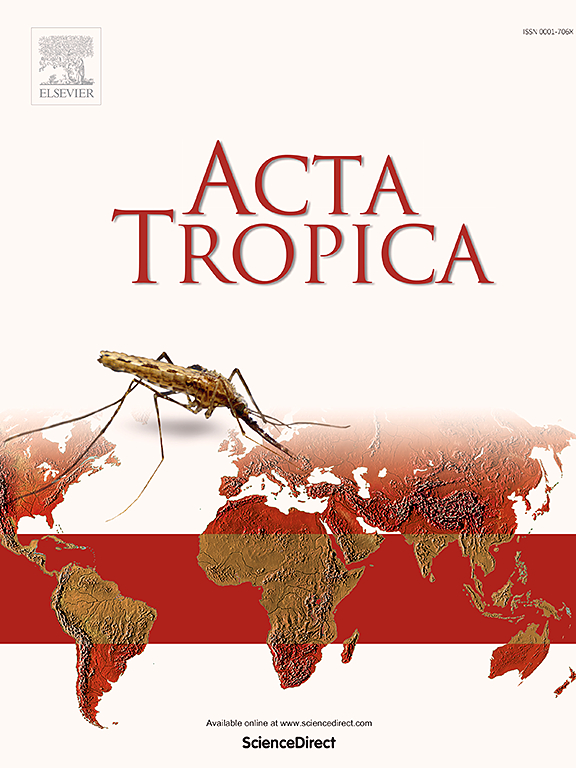Prevalence and first detection of HTLV-2 in a pregnant woman in rural Brazil
IF 2.1
3区 医学
Q2 PARASITOLOGY
引用次数: 0
Abstract
Human T-lymphotropic virus (HTLV) is a retrovirus with two subtypes, HTLV-1 and HTLV-2. HTLV-1 is linked to severe diseases such as adult T-cell leukemia/lymphoma (ATLL) and HTLV-associated myelopathy, while HTLV-2 is considered less pathogenic but can cause fibromyalgia, hairy cell leukemia, and neurological disorders. Although HTLV-2 is less prevalent than HTLV-1, it is common in specific populations, such as indigenous groups and injection drug users. In Brazil, an estimated 200,000–250,000 people are infected with HTLV-2, mostly in the North, yet data on its prevalence in pregnant women remain scarce. This study aimed to estimate the prevalence of HTLV-1/2 among pregnant women in Pernambuco, revealing a 0.49 % prevalence rate, which exceeds that reported in other regions of Brazil. Notably, one case of HTLV-2 was identified in a non-indigenous pregnant woman, suggesting that HTLV-2 may be more widespread than previously recognized. Despite the integration of HTLV screening into routine prenatal care, a major gap exists in the awareness of HTLV-2 among healthcare professionals and the general population, hindering effective prevention and management. The study highlights the need for expanded screening, particularly in rural areas, and underscores the importance of addressing gaps in sexual health education and prevention.
巴西农村一名孕妇HTLV-2的流行和首次检测
人类嗜t淋巴病毒(HTLV)是一种逆转录病毒,有HTLV-1和HTLV-2两种亚型。HTLV-1与成人t细胞白血病/淋巴瘤(ATLL)和htlv相关的脊髓病等严重疾病有关,而HTLV-2被认为致病性较低,但可导致纤维肌痛、毛细胞白血病和神经系统疾病。虽然HTLV-2不如HTLV-1流行,但它在特定人群中很常见,例如土著群体和注射吸毒者。在巴西,估计有20万至25万人感染HTLV-2,主要在北方,但有关其在孕妇中的流行率的数据仍然很少。本研究旨在估计伯南布哥省孕妇HTLV-1/2的患病率,发现患病率为0.49%,超过巴西其他地区的报告。值得注意的是,在一名非土著孕妇中发现了一例HTLV-2病例,这表明HTLV-2可能比以前认识到的更为广泛。尽管将HTLV筛查纳入常规产前护理,但卫生保健专业人员和普通人群对HTLV-2的认识存在很大差距,阻碍了有效的预防和管理。该研究强调需要扩大筛查,特别是在农村地区,并强调解决性健康教育和预防方面的差距的重要性。
本文章由计算机程序翻译,如有差异,请以英文原文为准。
求助全文
约1分钟内获得全文
求助全文
来源期刊

Acta tropica
医学-寄生虫学
CiteScore
5.40
自引率
11.10%
发文量
383
审稿时长
37 days
期刊介绍:
Acta Tropica, is an international journal on infectious diseases that covers public health sciences and biomedical research with particular emphasis on topics relevant to human and animal health in the tropics and the subtropics.
 求助内容:
求助内容: 应助结果提醒方式:
应助结果提醒方式:


